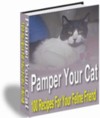As the name implies this charity cares for chronically sick, elderly and terminally ill cats, they are not a re-homing centre.
The cats are cared for within the comfort of a home. A vet, who is also a Trustee and visits the Hospice regularly, ensures that the cats receive all medical care to maintain an enjoyable quality of life. All the cats remain in the Hospice for the rest of their lives.
In order to help care for these desperately needy cats, the Hospice relies solely on the generous support from members of the public – whether cat owners or not!
To help meet the costs of caring for these cats they would welcome contributions – no matter how small. If you can help, you could –
send them a cheque (please make payable to St Francis Hospice)
send them a donation via your bank account, by telephone or internet banking
set up a standing order
subscribe to their newsletter
if you are a UK taxpayer you can give more by using Gift Aid.
donate goods to sell (if you live near enough)
The address of the Hospice is 3 Sapperton Close, Littleover, Derby, DE23 2NX, United Kingdom
FORTHCOMING EVENTS
Christmas Fayre – Saturday, 22nd November – 11am – approx. 2pm. Mickleover Methodist Church, Station Road.
For the Hospice’s fundraising events, they would be very grateful for:
Good quality unwanted gifts and jewellery, donations for the bottle stall, offers of help with fundraising, contributions for the home made cake and produce stall.
Registered charity number: 1062053
Filed under: Cat Rescue | Tagged: cat, Cat Care, cat diseases, Cat Health, cat illnesses, Cat Rescue, cat welfare, cats, chronically ill cats, chronically sick cats, elderly cats, kitten, kittens, st francis hospice for cats, terminally ill cats | 1 Comment »





